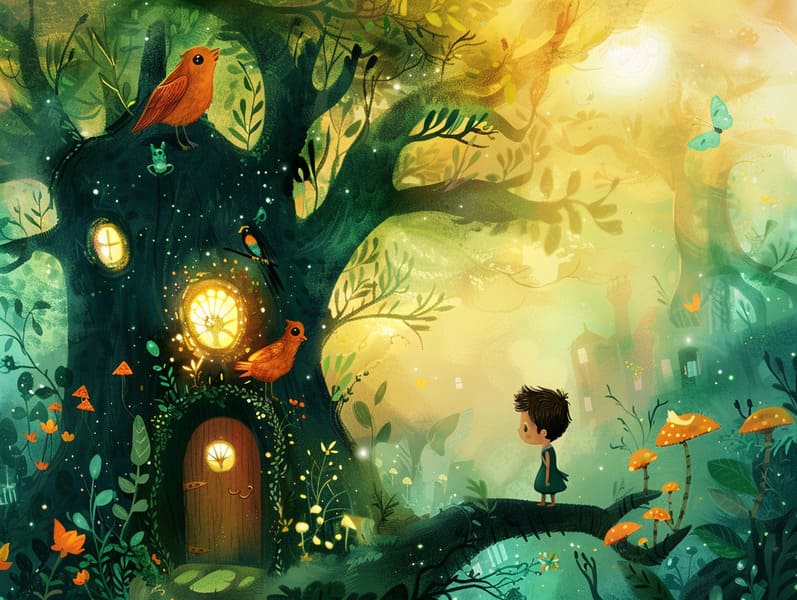Delving into the Background of Classic Fairy Tales with the Consistent Fascination.
Delving into the Background of Classic Fairy Tales with the Consistent Fascination.
Blog Article

Ancient fairy tales have enduring presence. These stories have been recounted from one generation to the next well before they were ever published. They arose from a variety of backgrounds, including Middle Eastern traditions. They were initially narrated among grown-ups, often carrying themes and messages reflective of the societal norms and beliefs of the time.
The Grimm brothers, Jacob and Wilhelm (the Grimm brothers), were among the first to compile and publish many of these beloved fairy tales. Their collection, "Grimm's Story Collection," included tales like "Cinderella," "The Bread Crumb Trail," and "Little Snow White," which have since become cornerstones in the world of classic fairy tales. Similarly, H. C. Andersen's fantastical stories, such as "The Sea Maid," and "The Duckling that Could," have gained the love worldwide, guaranteeing their place in the pantheon of treasured fairy tales.
Despite their ancient origins, these stories remain as significant as ever, especially as nighttime stories for kids. These enchanting tales are now available in multiple formats, including richly illustrated books, enchanting animations, and digital storybooks.
Their enduring popularity can be credited to several captivating elements:
Important Morals: Timeless fairy tales often impart important moral lessons. Stories like "The Boy Who Cried Wolf" teach the merit of integrity, while "The Race of the Tortoise and the Hare" demonstrate the merits of perseverance and unassuming nature. These narratives offer children clear distinctions between moral and immoral, shaping their moral compass in a tender yet impactful way.
Empathy and Understanding: Traditional fairy tales frequently present individuals facing obstacles and hardships, provoking readers to empathize with their struggles and champion their triumphs. For instance, "The Tale of Beauty and the Beast" conveys the necessity of appreciating inner worth to acknowledge the inner core of a being, nurturing warmth and discernment.
Cultural Perception: Many ancient fairy tales are rich in the cultural contexts from which they were born. Exploring these narratives can provide delightful insights into different social structures, advancing a sense of global appreciation and perception.
Inventiveness and Fantasy: The mythical elements in traditional fairy tales—talking animals—stimulate children’s innovative ideas. These narratives bring readers to fantasy realms, unleashing creative thinking and a sense of enchantment that stays a lifetime.
Traditional fairy tales are not only entrancing but also educational. They function as delightful tools in nurturing various mental and emotional abilities in children. When timeless fairy tales are read aloud, they nurture speaking abilities by offering new lexicon and detailed sentence structures. This practice also improves hearing abilities and attention span, as children listen intently, anticipating to see what happens next.
Furthermore, talking about the themes and characters of fairy tales can strengthen cognitive skills and problem-solving abilities. Young ones are educated to identify patterns, expect results, and catch on to cause and effect. These debates also contribute to kids say their thoughts and feelings, boosting their emotional intelligence.
In today’s technological era, the presence of online storybooks has made these fairy tales more available than ever. Web platforms and apps give wide arrays of children's fairy tales that can be perused or played anytime, anywhere. Fairy tales narrated are particularly favored, featuring an fun way for young ones to take part in these fascinating tales. Narrated books and read-out-loud videos guide characters and settings to life, often enhanced by charming harmonies and melodies that elevate the tale experience.
The timeless appeal of ancient fairy tales lies in their ability to shift to the present while keeping their underlying messages. Contemporary modernizations of these narratives often bring in more inclusive protagonists and modern settings, making them relatable to today’s audience. However, the main ideas of valor, compassion, and righteousness remain unchanged, continuing to reach audiences of all ages.
Classic fairy check here tales also offer a sense of peace and understanding. They offer a methodical narrative with a evident beginning, middle, and end, often closing with the wrap-up of conflicts and the triumph of honesty over deceit. This certainty can be relieving for little ones, rendering a sense of consistency in an always shifting world.
Timeless fairy tales continue to enchant and teach new generations, maintaining their attraction and pertinence in modern society. As kids' bedtime tales, they extend a perfect blend of magic and knowledge, developing moral values, empathy, and creativity. The prevalence of internet fairy tales and the prevalence of fairy tales voiced promise that these ancient tales remain available to new generations.
By protecting and distributing these stories, we continue to celebrate the rich tapestry of storytelling and cultural heritage. Whether you are perusing a richly illustrated book, seeing a virtual library, or playing an voice book, the spell of Grimm's fairy tales is always within reach. These stories remind us of the unwavering nature of storytelling and its ability to unite us across epochs and places.
No matter if you are viewing a vibrantly illustrated book, discovering a digital collection, or listening through an voice book, the wonder of children's fairy tales is always within reach.
These narratives illustrate of the unchanging nature of fairy tales and its ability to hold us together across generations and cultures, making a tie that enchants and educates alike.